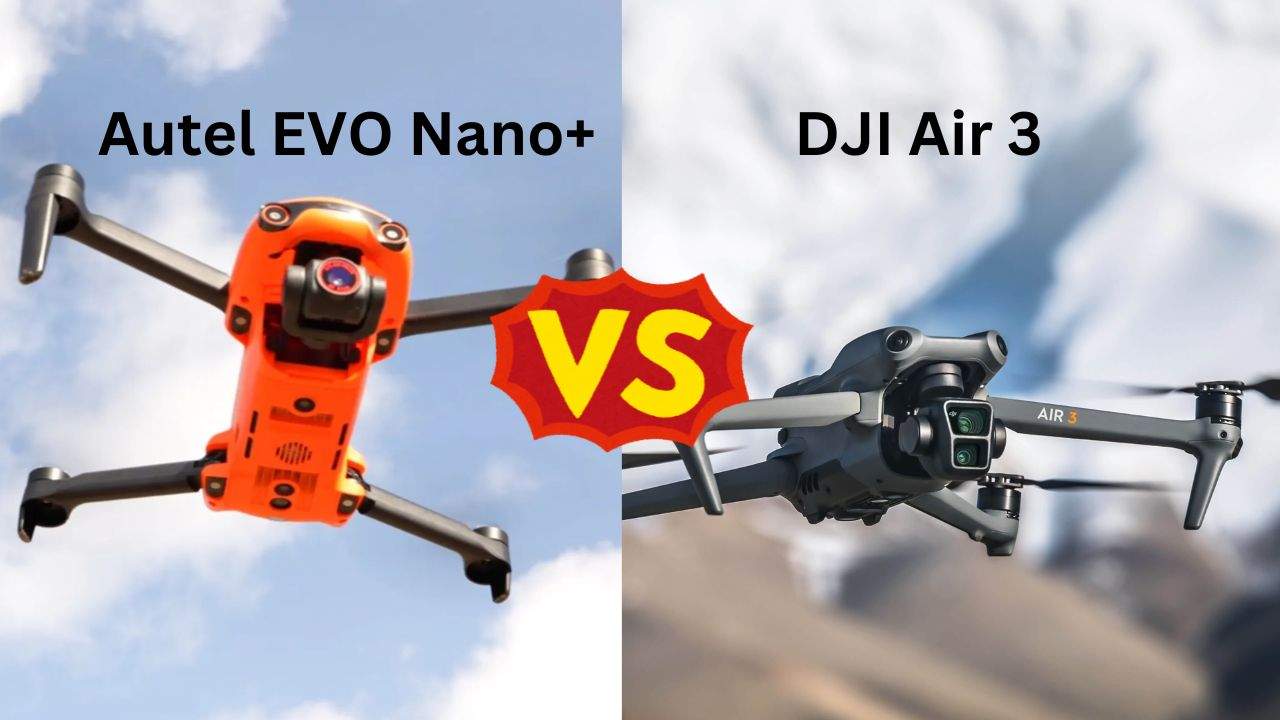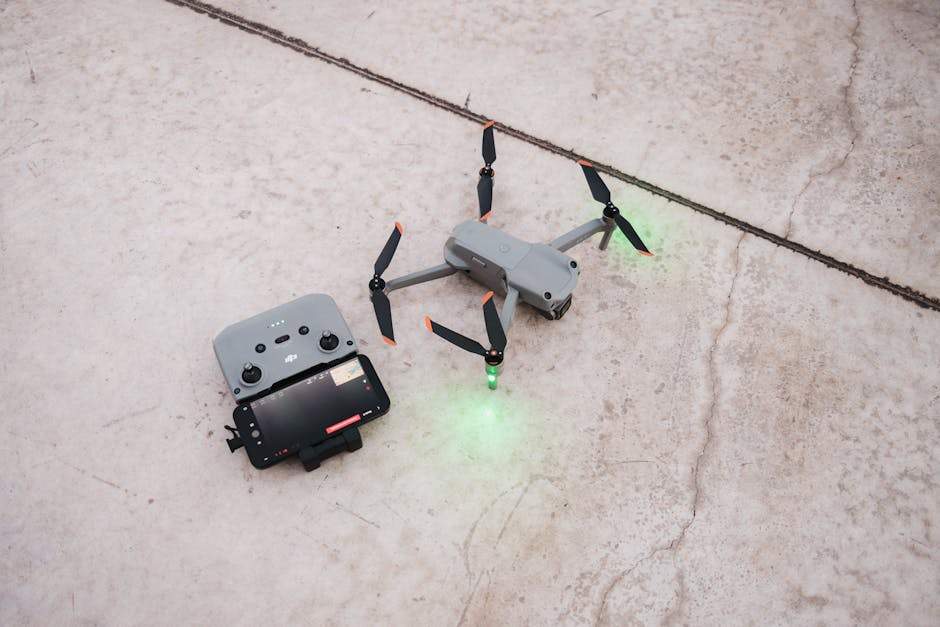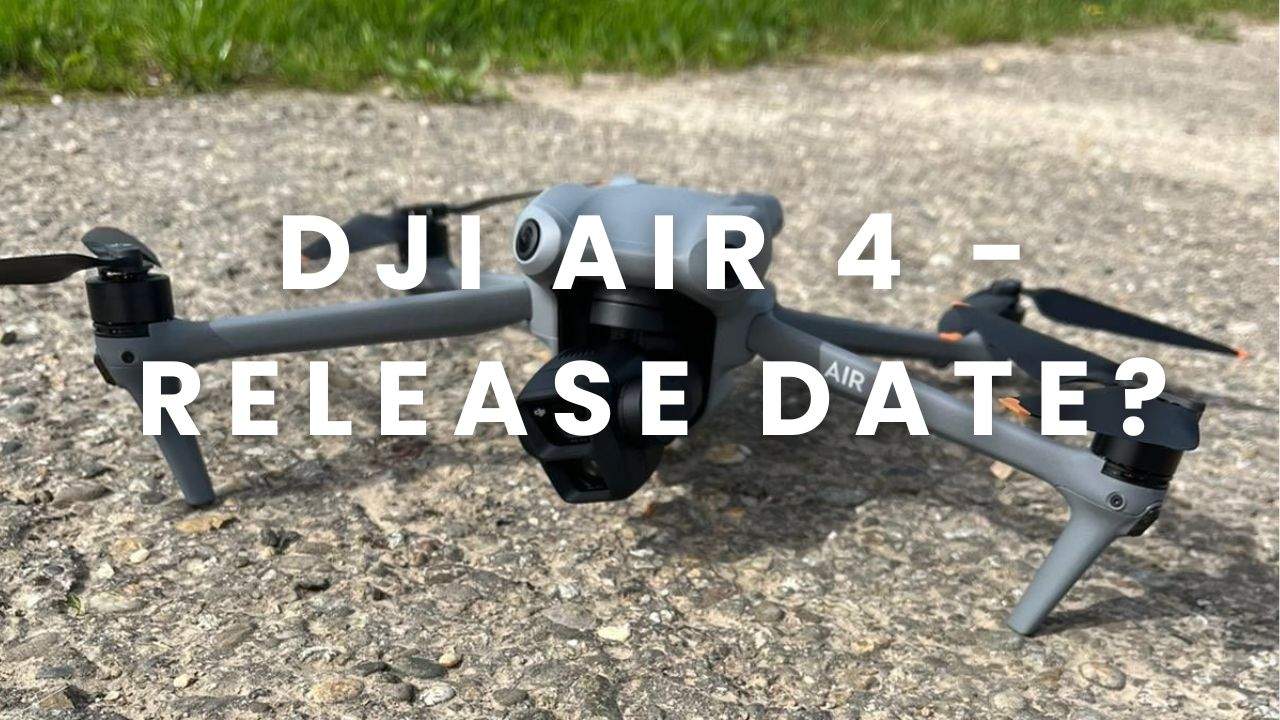It was an exciting moment when DJI, the manufacturer that arguably invented the modern camera drone, announced its first FPV (First Person View) drone. After three months of intensive testing, I would like to share my experiences and explain why my initial excitement was dampened.
DJI as the Pioneer for Modern Camera Drones
- Introduction of the first FPV drone
- Long-term test over three months
- Dampened enthusiasm
Anticipation and High Expectations
DJI has simplified flying for everyone, which is why my curiosity about the Chinese manufacturer’s first FPV model was extremely high. But why did my enthusiasm wane?
- DJI’s reputation: Simplifying flying for everyone
- High curiosity for the FPV model
- Drop in enthusiasm
The Unboxing
The packaging already hinted at extensive contents. Starting at 1349 Euros, one gets not only the drone and the transmitter but also the Goggles glasses and additional accessories. Visually, the drone is impressive: sporty, aggressive, and streamlined compared to other models. However, there are design elements that seem out of place, like the collision sensors on the front and bottom.
- Extensive packaging
- Price: Starting at 1349 Euros
- Contents: Drone, transmitter, Goggles glasses, additional accessories
- Drone Design:
- Sporty, aggressive, streamlined
- Inappropriate collision sensors (front and bottom)
The Goggles Glasses
Almost half the price is for the glasses, which, despite their sturdy construction and a refresh rate of 144Hz, have a slightly lower resolution of 1440 x 800 pixels – not Full HD. Another downside: They are heavy and do not have a built-in battery. The glasses, while functional, could be designed to be more ergonomic.
- High price (almost 50% of the total price)
- Sturdy construction
- Refresh rate: 144Hz
- Resolution: 1440 x 800 pixels (Not Full HD)
- Heavy glasses without built-in battery
- Room for improvement: Ergonomics
The Technology Behind It
A significant advantage of the DJI FPV drone is the digital transmission system “OcuSync 3.0”. It provides HD-Ready resolution at 120 frames per second. The drone can also be controlled via a transmitter that resembles a game controller and is very handy.
- Digital transmission system: “OcuSync 3.0”
- HD-Ready resolution, 120 frames per second
- Transmitter:
- Design similar to a game controller
- Handy
The Actual Flying
When flying, it quickly becomes clear that this drone is not as compact as other models. An additionally recommended camping chair might be useful when flying to maintain balance while wearing the glasses.
The drone offers different modes: in normal mode, it behaves like any other DJI drone and uses sensors like GPS. However, there’s also a Sport mode for more power and a Manual mode where one can fully control the drone themselves.
Size comparison: Not as compact as other modelsRecommendation: Camping chair for balance with glasses Flight modes:
- Normal mode: Like other DJI drones, uses sensors like GPS
- Sport mode: More power
- Manual mode: Complete manual control
The DJI FPV Drone: A Game Changer or Just an Expensive Toy?
When we think of FPV (First Person View) drones, most of us envision small, agile quadcopters zooming through trees and gates at breakneck speeds. DJI, the company known for its user-friendly and high-quality drones, has now introduced its own version of an FPV drone to the market. But is the DJI FPV really worth the money?
- Concept of FPV drones:
- Small, agile quadcopters
- DJI:
- Known for user-friendly and high-quality drones
- New Interpretation:
- DJI FPV drone
- Main question:
- Is the DJI FPV worth its price?
Performance and Transmission
Firstly, let’s delve into the technical details: The DJI FPV offers a range of six kilometers, though in practice, one should always fly within line of sight. It uses both the 2.4 and 5.8 GHz bands for transmission, which means that the connection can sometimes be unstable in the presence of obstacles, such as dense rows of trees. During the flight, useful information such as battery level, speed, and altitude are displayed. The video quality is impressive, boasting a maximum resolution of 4K at 60 frames per second. The colors are vibrant, and thanks to the 60fps, the video appears smooth and realistic.
- Range:
- Six kilometers (recommended line of sight)
- Transmission bands:
- 2.4 GHz and 5.8 GHz
- Issues:
- Possible instability with obstacles (e.g., dense trees)
- Information displayed during flight:
- Battery level
- Speed
- Altitude
- Video quality:
- 4K at 60 frames per second
- Color quality:
- Vibrant
- Video impression:
- Smooth and realistic
Design and Camera
The DJI FPV camera features an ultra-wide-angle lens with a 15 mm field of view and an aperture of f/2.8. However, the sensor is only moderately large, meaning that the image quality can degrade in low light conditions. At sunset, image noise can become quite noticeable. Also, the dynamic range could be better, as bright areas can become quickly overexposed and dark areas underexposed.
- Camera features:
- Ultra-wide-angle lens
- Field of view: 15 mm
- Aperture: f/2.8
- Sensor size:
- Mediocre
- Image quality:
- Diminished in poor light
- Noise:
- Noticeable at sunset
- Dynamic range:
- Room for improvement (overexposure/underexposure issues)
Repair and Safety
A major issue with the DJI FPV is its susceptibility to damage. Due to its relatively heavy weight, it can sustain significant damage in a crash. DJI claims that their drone is modular, but in practice, it’s not that simple to obtain replacement parts, and they are often expensive. Moreover, the drone’s speed combined with its weight can result in considerable damage if an accident occurs.
- Susceptibility to damage:
- High due to weight
- Modular design:
- Claimed by DJI
- Practical problems:
- Availability of replacement parts: Challenging
- Cost: Often high
- Danger in accidents:
- Combination of speed and weight can lead to significant damage
Conclusion
Without a doubt, the DJI FPV is an impressive piece of technology, but it’s not for everyone. For professionals or those with a substantial budget, it might be a good choice. However, for those just starting with FPV flying or on a tight budget, there are other more affordable options on the market that might be better suited. It remains to be seen how DJI will address these concerns in the future and whether they will further improve their FPV drone.
| Aspect | Pros | Cons |
|---|---|---|
| Reputation & Technology | – DJI known as a leader in modern camera drones. – Introduction of their first FPV drone. – “OcuSync 3.0” provides HD-Ready resolution at 120fps. | – Dampened enthusiasm despite anticipation and high expectations. |
| Packaging & Accessories | – Extensive packaging. – Comes with drone, transmitter, Goggles glasses, and additional accessories. | – Half the price attributed to the Goggles glasses. |
| Design Elements | – Sporty, aggressive, and streamlined drone design. | – Inappropriate placement of collision sensors. |
| Performance & Transmission | – Six-kilometer range. – Uses both 2.4 and 5.8 GHz bands. – Display of essential flight information. – High video quality (4K at 60fps) with vibrant colors. | |
| Camera Capabilities | – Ultra-wide-angle lens, 15 mm field of view, and f/2.8 aperture. | – Mediocre sensor leading to diminished image quality in poor light. – Noise at sunset. – Overexposure/underexposure. |
| Goggles Glasses | – Sturdy construction with a 144Hz refresh rate. | – Lower resolution (not Full HD). – Heavy and lacks built-in battery. – Ergonomic improvements needed. |
| Repair & Safety | – High susceptibility to damage due to weight. – Issues with replacement parts and their costs. | |
| Target Audience & Conclusion | – Suitable for professionals or those with a substantial budget. | – Might not be apt for beginners or those on a budget. – Awaiting DJI’s response to criticism and potential improvements. |






















